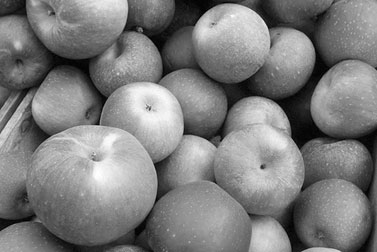Increasing local production
 A
couple of weeks ago, we focused on the need to popularise the
consumption of fresh liquid milk in the country to counter the
dependence on imported powdered milk. This week too, we will be
examining more ways in which local foods can be popularised instead of
relying too much on imported foods. A
couple of weeks ago, we focused on the need to popularise the
consumption of fresh liquid milk in the country to counter the
dependence on imported powdered milk. This week too, we will be
examining more ways in which local foods can be popularised instead of
relying too much on imported foods.
Sri Lanka will soon ‘inherit’ an ocean area 23 times the size of its
landmass (65,610 Sq Km). This is a very vast area by any stretch of the
imagination and one can only imagine the ocean resources contained
therein. Oil is one resource that comes to mind, but there is an even
more important resource - fish.
Sri Lanka’s fishing industry which took a beating after the December
2004 tsunami has almost fully recovered. Moreover, the end of the
three-decade conflict and the resultant relaxation of fishing
restrictions in the Northern and Eastern seas have had a positive impact
on the fisheries sector. The fish harvest should go up.
However, the local fisheries industry has not still realised its true
potential. This is not a healthy situation for an island such as ours.
The authorities plan to import fresh fish from certain countries to meet
the shortfall in demand, even though Sri Lanka hauled in 339,730 metric
tons of fish last year.
This ‘catch’ is not adequate to meet the local demand. Sri Lanka also
imports Rs. 15,000 billion worth of canned fish especially from South
America every year. In fact, Sri Lanka is the number one importer of
canned fish from Chile, with Spain and the United States in second and
third place.
There are many obstacles that prevent Sri Lankan fishermen from
exploiting the ocean’s seafood resources to the fullest possible extent.
Most of them do not have sophisticated multi-day boats with sonar
facilities for monitoring fish. Most fishermen are smalltimers who
depend on the day’s catch for a living.
It is also no secret that foreign trawlers poach in our waters and
take away a catch that is rightfully ours. There is a joke to the effect
that we are buying our own fish, albeit from overseas in canned form.
But it is certainly no laughing matter. A peacetime Navy and a newly
established Coast Guard should be able to check this trend.
Clearly, there is a need for modernization of our fishing fleet. The
Food and Agriculture Organisation (FAO) of the UN has pledged to assist
the development of the fisheries sector. This is a golden opportunity
for the sector.
Countries such as China will assist the fisheries industry. Several
investors are also keen to construct ice plants here, mainly in the
newly resurgent North and the East. This step would hopefully address
the wastage of the fish harvest.
Sri Lanka also needs canning factories, which will help preserve fish
for delayed consumption and also save at least part of the funds used
for canned fish imports. At least a 10 per cent rise in local fish
production is desirable to help the local consumer while benefiting the
economy. At present, fisheries contributes only 1.2 per cent to the GDP
and this should go up in the next few years.
Sri Lanka also purchases a large quantity of wheat flour every year,
which is used to turn out bread and other products. This enriches the
wheat farmers in the West at the expense of our paddy farmers. Sri
Lankans have come to rely on bread at the expense of the staple food
item - rice. There seems to be a glut of rice in the market and even
imported varieties have become very affordable.
 The
answer is popularising the consumption of rice itself and rice-flour
based bakery products. The campaign in this regard, which began some
time ago, seems to have fizzled out. Now is the time to revive this
campaign and consume more rice instead of bread. The more rice we
consume, the better it is for the local paddy farmer as he will command
a higher price. The
answer is popularising the consumption of rice itself and rice-flour
based bakery products. The campaign in this regard, which began some
time ago, seems to have fizzled out. Now is the time to revive this
campaign and consume more rice instead of bread. The more rice we
consume, the better it is for the local paddy farmer as he will command
a higher price.
More incentives and concessions should be given to bakeries which
make more rice flour based products. The media too should step up the
campaign on the theme ‘Rice is Life’.
Sri Lanka also spends billions of rupees to import fruits such as
apple, grapes and orange. One can argue that imports are justified
because these fruits are not usually grown here.
True, the consumer is entitled to buy what he or she wants in an open
economy and one cannot impose restrictions on imports as long as the
relevant paperwork is correct and the taxes are paid.
But locally grown fruits get short shrift in this process as even
rural communities opt for imported fruits and other foods. Therefore,
there is a need to popularise local fruits, ludicrous as this suggestion
may sound.
Apart from importing fruits in fresh form, we also import canned
fruit. Sri Lanka already has several world class fruit canning and
bottling plants. They should be encouraged to expand their product lines
to compete effectively with foreign brands.
An added advantage is that it will help minimise post-harvest losses
and waste, since a portion of the harvest can be bottled or canned right
away. Given the local consumers’ preference for foreign goods, quality
is one aspect that can turn the tide in favour of local canned products.
Affordability is another - if local products are on par with the foreign
ones in terms of quality and are cheaper, there is a real chance for
success.
The livestock sector in general should also see a rise in production.
Certain impediments which block the momentum of this sector should be
removed. Foreign livestock/meat products are flooding the market, but
increased production and better quality products should save the day for
the local livestock farmer.
The National Livestock Development Board and private investors in
this field must be further encouraged. The Ganna Apey Dev (Buy Sri
Lankan products) campaign should also step up their efforts to
popularise local products from rice to fruit to poultry.
|

